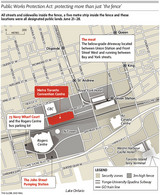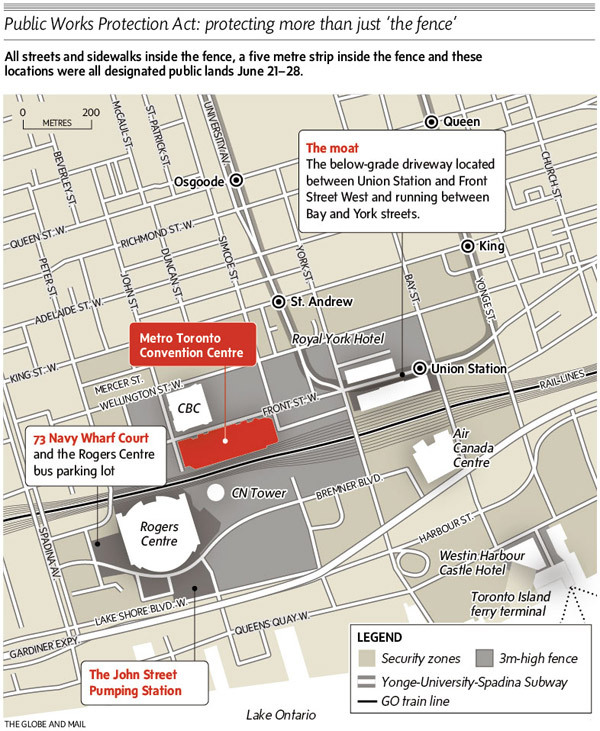
2010-06-30
But they let public believe they had authority to search people who were within five metres of the downtown security perimeter
Anna Mehler Paperny
Hours after Toronto Police Chief Bill Blair sat in front of a bank of cameras and microphones last Friday morning, defending the powers the province gave police to search, detain or arrest anyone coming within five metres of the G20 summit’s security fence, Toronto police received new information: The regulation specified nothing of the sort.
But police, having papered the area with pamphlets outlining G20-related security rules, felt no need to send out a press release clarifying how the regulation in question worked.
In total, police arrested more than 1,000 people over the course of the G20 summit. But of those, only 263 were charged with anything more serious than breach of peace – 714 people faced that minor charge, and were released unconditionally.

Another 113 were released unconditionally with no charges: They were arrested but not booked, said police spokesman Mark Pugash, who emphasized these numbers aren’t final. He said no one was arrested under the Public Works Protection Act who shouldn’t have been.
Police announced Tuesday morning they are conducting an internal review of police actions during the summit, but groups – including the Canadian Civil Liberties Association and Amnesty International – are calling for an independent inquiry.
Mr. Pugash said Mr. Blair was under the impression Friday morning that a regulation under the provincial Public Works Protection Act, in force June 21-28, specified a five-metre space outside the security fence encircling the Metro Toronto Convention Centre. The act is Second World War-era law that grants police the right to search and arrest people without a warrant in designated areas.
“The five-metre zone around the fence is for the protection of the security barrier,” Chief Blair told reporters. “I think we’ve all seen film of other, similar events where people have come down with the intent of breaching the barrier. … This enables us to prevent those types of actions.”
By mid-afternoon Friday, Mr. Pugash said, police got new information informing them that, as both police and the province confirmed Tuesday, the regulation merely applied only to the area within the fence.
Police sent out a bulletin to police officers, Mr. Pugash said, but did not see a need to tell media or the public because pamphlets they had sent out more than a week earlier contained sufficient information.
“This pamphlet, which goes into exhaustive detail, equipped people with the information they needed,” he said. “We had provided people with a large amount of information.”
